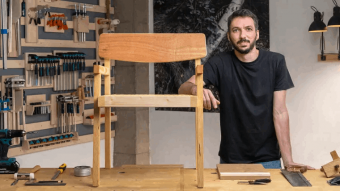Distillation Columns Principles Operation Design
Tags: Chemical Engineering
A complete understanding of construction details and functioning of distilling columns for successful operation
Last updated 2022-01-10 | 4.5
- Understand the thermodynamics of Vapor Liquid Equilibria for pure components and mixtures- Know
- understand and master the concepts necessary to optimize the operation of your distillation column
- Know about all parameters and profiles for the analysis of your distillation column operation
What you'll learn
* Requirements
* Some engineering or field knowledge is preferable but not mandatory. All the concepts are explained in depth using an easy to understand language to allow students to build their knowledge from the ground upDescription
Distillation columns of various designs and applications are encountered nowadays throughout petroleum refining, petrochemical, chemical and process industries.
This course is designed to provide you with a complete understanding of construction details and functioning of distilling columns. This understanding is a prerequisite for successful operation of your plant.
The course features 5 major items :
1- VAPOR LIQUID EQUILIBRIA : (thermodynamics of pure components and complex mixtures)
Volatility of pure components : boiling point, vapor pressure
Concept of Sensible and Latent Heat
Behavior of mixtures in distillation : dew and bubble points, vaporization curves, total/partial condensation and vaporization, liquid-vapor separation and distribution of components according to their volatility
Relation between temperature, pressure and composition of distillate and residue
...
2- INDUSTRIAL DISTILLATION PRACTICES :
Operating parameters of an industrial distillation column (Pressure, Temperature, Flow rates, Reflux Ratio...)
Separating power : number of stages, liquid and vapor traffics, feed inlet location
Column pressure : pressure control and pressure profile along the column
Internal flow rates profiles, concentration and temperature profiles, concentration peaks
Material balance of the column : concepts of cut point, separation quality and fractionation capability
Heat balance : condenser and reboiler duties, Reflux and Boil-up ratios and industrial configurations
Instrumentation and process control loops around the column
...
3- INDUSTRIAL DISTILLATION EQUIPMENT :
Trays : technology, performances, flexibility
Packings (structured or random) : technology, performances, flexibility
Different types of contacting systems for the active area : bubble caps, fixed or floating valves
Liquid or vapor distributors, collectors and redistributors
Troubles such as flooding, weeping, fouling...
...
4- ASSESSING DISTILLING COLUMN PERFORMANCE USING ASPEN PLUS (A CHEMICAL ENGINEERING SIMULATOR)
Base case
Effect of temperature
Effect of pressure
Effect of feed stage location
Effect of reflux ratio
...
5- SOLVED PROBLEMS
Ethylene / Ethane fractionator
Reboiler operation
Flash separator
Distilling column overhead operations
Depropanizer case study
...
Many images, cross sectional views, graphs and animations can be found throughout, increasing the value of this course as an educational tool and industrial reference for personnel involved in distilling operations.
So this course is not only of use to practicing engineers and operators to whom a knowledge of the distillation process is of crucial importance in efficient operation of distilling columns but also intended as a study guide for undergraduates in process, chemical, petrochemical & petroleum engineering disciplines.
So with no further ado, check out the free preview videos and the curriculum of the course and we look forward to seeing you in the first section.
Hope to see you there !
WR Training
Spread the wings of your knowledge
Who this course is for:
- Chemical engineers
- Process engineers
- Design engineers
- Process control personnel and technical staff in the refining, petrochemicals, chemical and process industries
- Production and Shift Supervisors in charge of distilling columns
- Field Operators
- Experienced field operators preparing for console operations
Course content
8 sections • 79 lectures








 This course includes:
This course includes:














